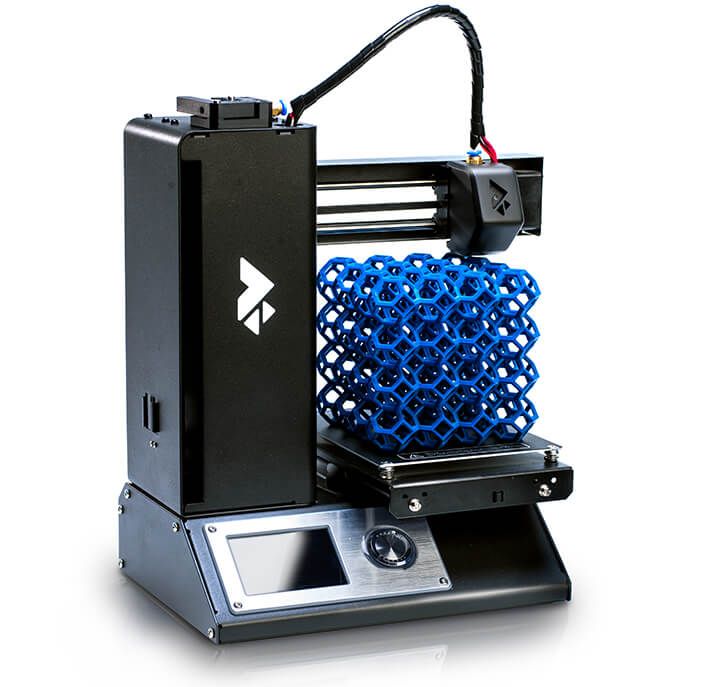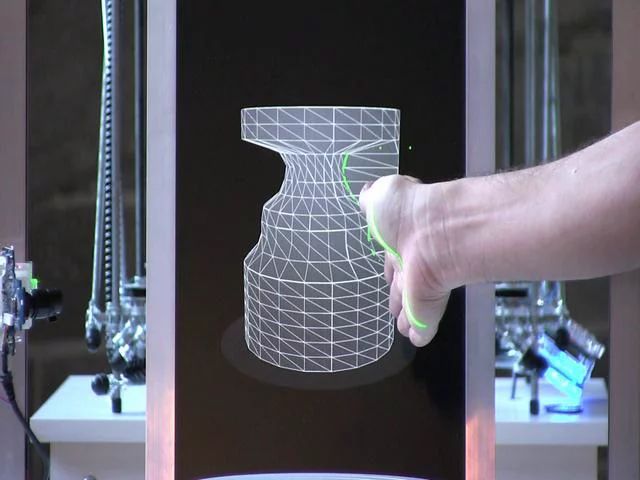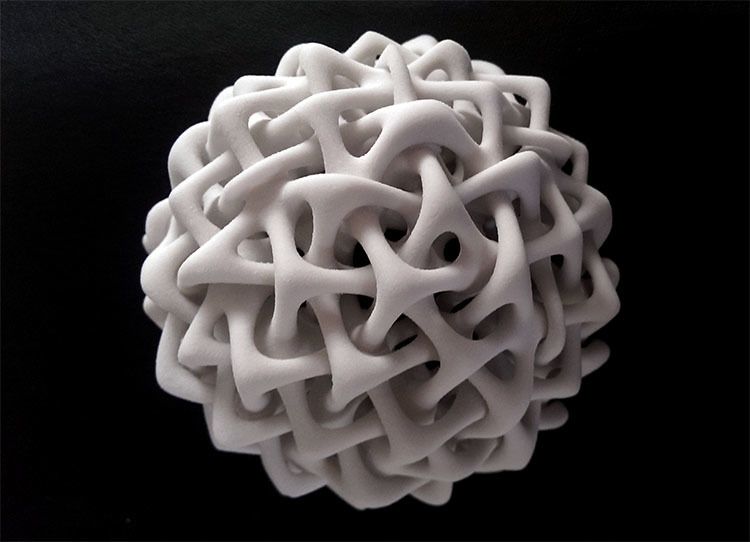High speed 3d printer
7 Fastest 3D Printers 2022 In Every Price Range
One of the major gripes with 3D printing is many consider it to be slow. However, over time both the speeds of FDM and resin printers have crept up — and there are now some super-fast options for both technologies.
For industrial printing, there are printers now reaching speeds competitive with traditional manufacturing, aiming to displace injection molding.
But what are the other fastest 3D printers in the world?
We have listed the world’s fastest 3D printers in every price range below, for both FDM and resin printers – but first, let’s explain the factors that affect the speed of 3D printing.
Do Bigger 3D Printers Print Faster?
A bigger resin 3D printer does indeed print faster, but this is more in the sense of being more productive. A resin printer cures an entire layer on the XY axes, regardless of size, in one go. This means that the larger the printer, the more productive the printer is.
However, this isn’t the case for FDM printers, which need to deposit filament across the entire layer before moving on to the next.
FAST FDM PICK
Flsun Super Racer
200mm/s makes it one of the fastest FDM printers around
Comes 95% pre-assembled
Available at:
Amazon hereFAST RESIN PICK
Anycubic Photon M3 Plus
Super-fast 100mm/h speed
Larger resin build area for scalable minis prints or larger resin models
Available at:
Anycubic hereAmazon hereSUPER-FAST PICK
Phrozen Sonic Mega 8K
Extremely high-res 8K LCD screen
Enormous build area and 70mm/h speed
Available at:
Phrozen hereHow Fast is a 3D Printer?
As for the technologies and 3D printers we have now, simply stating the fastest possible 3D printing speeds is difficult.
That’s because – and I know it’s frustrating to read this – it depends on several factors:
Resolution of the 3D printed part: before you start printing, you need to slice your model into layers on a 3D slicer. The more layers, and the thinner each layer, the longer the part will take to print at the same speed. A part printed with 50-micron layers will have twice as many layers as the same part printed with 100-micron layers, and take twice as long at the same speed.
- We also have a guide to high resolution 3D printers.
Quality of print: theoretically you could run a budget 3D printer at an extremely high speed, and it would still print. But the results wouldn’t be anything like how it looked on your slicer. It would be a mess of filament hairs and blobs, because the speed settings were set too fast. Some 3D printers can handle high-speed 3D printing, some cannot.
3D printing technology: how fast a 3D printer prints depends on the technology.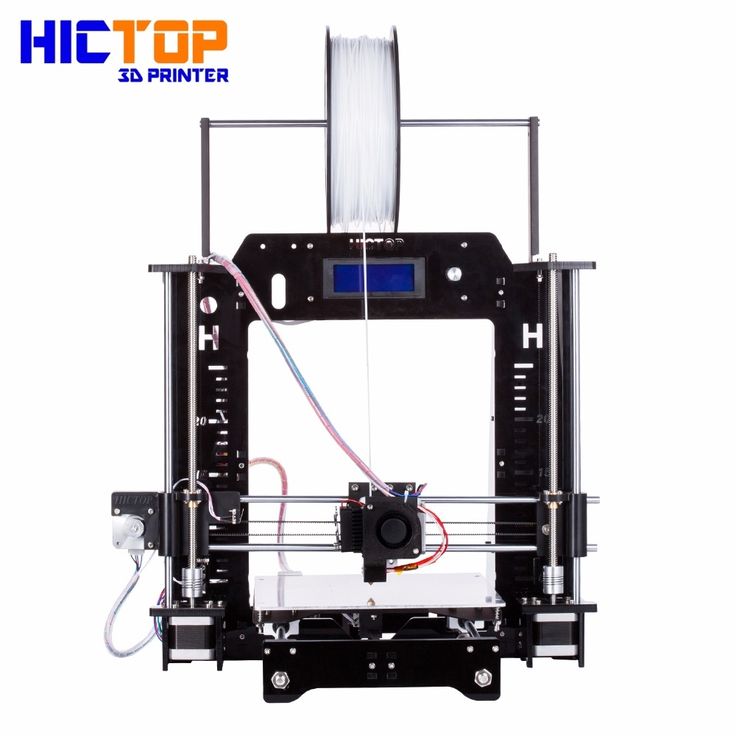 Resin 3D printers are significantly faster than FDM 3D printers as they can cure entire layers at once, rather than depositing filament over each part of the layer. The fastest 3D printing technologies include Multi Jet Fusion and resin 3D printing technologies like MSLA.Resin 3D printing technologies are known for being faster than FDM.
Resin 3D printers are significantly faster than FDM 3D printers as they can cure entire layers at once, rather than depositing filament over each part of the layer. The fastest 3D printing technologies include Multi Jet Fusion and resin 3D printing technologies like MSLA.Resin 3D printing technologies are known for being faster than FDM.
Material: some materials are easier to print than others, putting less demand on the printer and leading to a slightly faster print.
Complexity of the model: You will be able to print a cube block far quicker than an intricate 3D printed jewelry piece. This is because you can print larger layers and at a faster print speed without a notable loss of quality, since the cube is a very simple shape with no details.
Size of print: fairly obvious, but a larger print will take far longer than a small one. A full-size vase will take around 12 hours to print in normal detail on most FDM 3D printers, but a small statue may take under an hour.
Nozzle size: for FDM 3D printing, smaller nozzles mean more intricate details can be printed more accurately, but larger nozzles can potentially print faster.
Will 3D printers get faster?
Almost certainly. We’ve already seen a number of major innovations that make 3D printers faster in the last decade. In 2012, the first delta 3D printers started to appear, which print significantly faster than previous Cartesian 3D printers.
Then, new resin 3D printer innovations such as Carbon 3D’s CLIP, and Uniz’s UDP technologies made SLA and DLP faster. Other significant speed innovations include HP’s Multi Jet Fusion technology, and also the huge advances being made in many metal 3D printers such as those by Desktop Metal and Markforged.
The Fastest 3D printers 2022 in Every Price Range
| Name and brand | Build volume (mm) | Max speed | Price | Where to buy |
|---|---|---|---|---|
| Flsun Super Racer | 260 x 260 x 330 | 200mm/s | $499 | Amazon here |
| Anycubic Photon M3 Plus | 197 x 122 x 245 | 100mm/h | $699 | Anycubic here |
| Anycubic Photon M3 Max | 298 x 164 x 300 | 60mm/h | $1099 | Anycubic here |
| Phrozen Sonic Mega 8K | 330 x 185 x 400 | 70mm/h | $2199 | Phrozen here |
| Uniz Slash UDP | 293 x 122 x 200 | 600mm/h | $1,999 | Matterhackers here |
| WASP 2040 Pro Turbo | 200 x 200 x 400 | 500mm/s | $3,400 | Amazon here |
| HP Jet Fusion 5200 | 380 x 284 x 380 | 4115cm3/h | Quote |
3DSourced is reader-supported. When you buy through links on our site, we may earn an affiliate commission. Learn more
When you buy through links on our site, we may earn an affiliate commission. Learn more
Flsun Super Racer – Fastest FDM 3D Printer Under $500
- Price — Check latest price at Amazon here
- Technology: FDM Delta
- Max Print Speed: 200 mm/h
- Build Volume: 260 x 260 x 330 mm
True to its speedy name, the Flsun Super Racer is a Delta FDM printer that absolutely gallops with a top print speed of 200 mm/h. It’s an upgraded version of Flsun’s QQ-S, which after some one-on-one time we found to be a competent, worthwhile printer for large projects.
Delta printers are known for offering higher speeds than their Cartesian brothers, but Flsun is pushing the boat out to new extremes with the Super Racer. Most standard FDM printers perform best at a comfortable 50-60 mm/h, while the Super Racer delivers solid quality prints at four times that.
With a decently-sized 260 x 260 x 330 mm build volume, the Super Racer is also big on vertical print capacity, ideal for those towering prints that exceed the dimensions of budget FDM printers.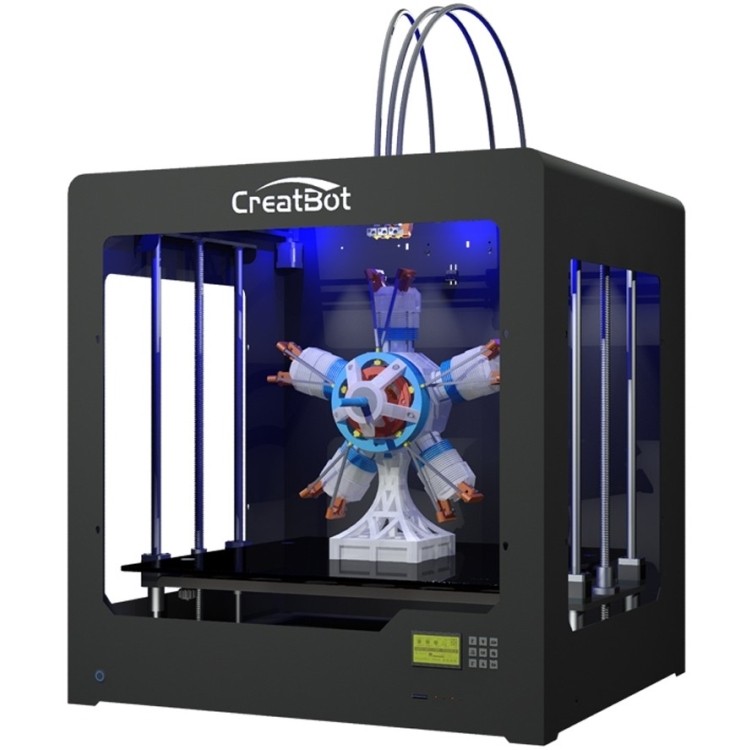 Throw in a thoughtful design, quality components, automatic bed leveling, breezy 20-minute assembly, a responsive, easy-to-navigate detachable touch screen, and the Super Racer comes awfully close to a speed freak’s dream 3D printer.
Throw in a thoughtful design, quality components, automatic bed leveling, breezy 20-minute assembly, a responsive, easy-to-navigate detachable touch screen, and the Super Racer comes awfully close to a speed freak’s dream 3D printer.
Now, all this speed does come with a trade-off. Delta printers, the Flsun Super Racer included, lack the accuracy and consistent print quality offered by Cartesian 3D printers. The difference is relatively negligible, but it’s a point to consider before buying for makers that favor quality over speed.
On the filament front, the Flsun Super Racer’s Bowden extruder setup works great for PLA but coughs up the usual Bowden-related jamming and clogging issues with flexibles. For example, if you’re working with TPU, you’re better off sticking to a classic Cartesian printer – ideally with a direct drive extruder.
Anycubic Photon M3 Plus/Max – Fastest Resin 3D Printers Under $1,000
- Price: $699 / $1,099 — M3 Plus Available here / M3 Max Available here
- Technology: MSLA Resin
- Max Print Speed: 100 mm/h / 60 mm/h
- Build Volume: 197 x 122 x 245 mm / 298 x 164 x 300 mm
More than simply an update to the long-running Photon series, the Anycubic Photon M3 machines are turning more than a few heads as the fastest resin 3D printer range around.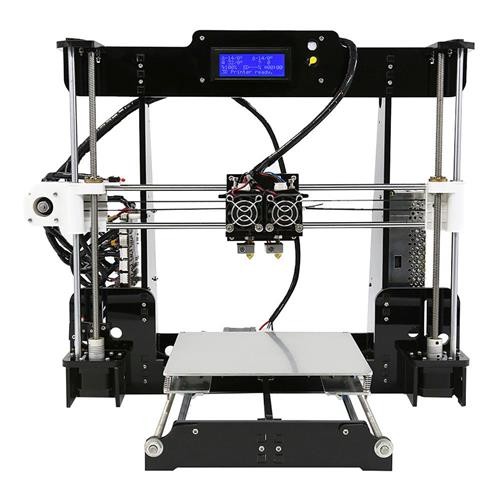
In particular, the Anycubic Photon M3 Plus proposes a top print speed of 100 mm/h. The beauty of resin printers is that they cure in layers, regardless of how much space on the build plate that layer takes. Those 100 mm/h apply whether you’re printing a single small miniature or a batch of twelve, which makes the Anycubic Photon M3 Plus exponentially more productive.
The Anycubic Photon M3 Max is no slouch either, offering a respectable 60 mm/h, but does this across a massive 298 x 164 x 300 mm. That’s the largest of any Anycubic resin printer and among the highest capacities found on consumer-grade printers, rubbing shoulders with the hulking Elegoo Jupiter and Phrozen Sonic Mega 8K.
Elsewhere, the Photon M3 duo stands out for offering excellent detail with 34 microns XY resolution on the Plus and 46 microns on the Max. The Max has a 7K LCD, one of the highest pixel counts on the market, while the Plus pushes a 6K LCD – higher than the standard 4K found on comparable printers. Both machines also ship with Anycubic excellent textured checkerboard build plate, which offers superb print adhesion.
Both machines also ship with Anycubic excellent textured checkerboard build plate, which offers superb print adhesion.
Read the full comparison: Anycubic Photon M3 vs M3 Plus vs M3 Max
Phrozen Sonic Mega 8K – Fastest High-Quality Resin 3D Printer
- Price: $2,199 — Available at Phrozen official here
- Technology: MSLA Resin
- Max Print Speed: 70 mm/h
- Build Volume: 330 x 185 x 400 mm
With the Phrozen Sonic Mega 8K, size and speed combine into arguably one of the most impressive mid-range professional resin printers on the market.
The 330 x 185 x 400 mm build volume is the largest available in this price range, and the Sonic Mega 8K darts across this printing expanse at a nippy 70 mm/h. No other printers manage to weave in such a large build volume with such high speeds; it’s always been one or the other.
The Phrozen Sonic Mega 8K allows makers to hone in on all the fine features and intricacies of even the most detailed models and minis thanks to a 43-micron resolution, propped up by a pixel-rich 15’’ 8K LCD.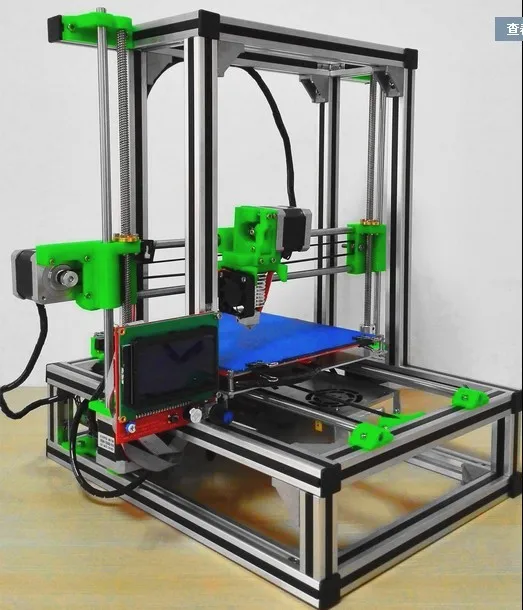 It’s a level of quality that simply isn’t currently available on any other printer in the same printer segment.
It’s a level of quality that simply isn’t currently available on any other printer in the same printer segment.
The build plate comes pre-calibrated, allowing you to print without delay once the Mega 8K lands on your doorstep. A clever dual linear rail design ensures the printer behaves and delivers those sharp details even high up into the upper reaches of the build area.
If you need a mammoth-format printer at a reasonable price to power a small business where time is of the essence, there’s little else out there that comes close to the Phrozen Sonic Mega 8K. If the build volume exceeds what you’ll conceivably ever need, a lower-cost resin printer such as the Anycubic Photon M3 Plus or even the standard M3 is likely a better use of your money. The Phrozen Sonic Mega 8K is a jumbo printer and will be far too much for most amateur makers.
Uniz Slash Plus UDP — Fastest desktop 3D printer
- Max print volume: 293 x 122 x 200 mm
- Price: $1,999 — Available on Matterhackers here
- Fastest 3D printer speed: 600mm/hour in UDP mode
Uniz have made a big impact since their original Kickstarter campaign that raised over $500,000 to produce super-fast resin 3D printers at consumer prices.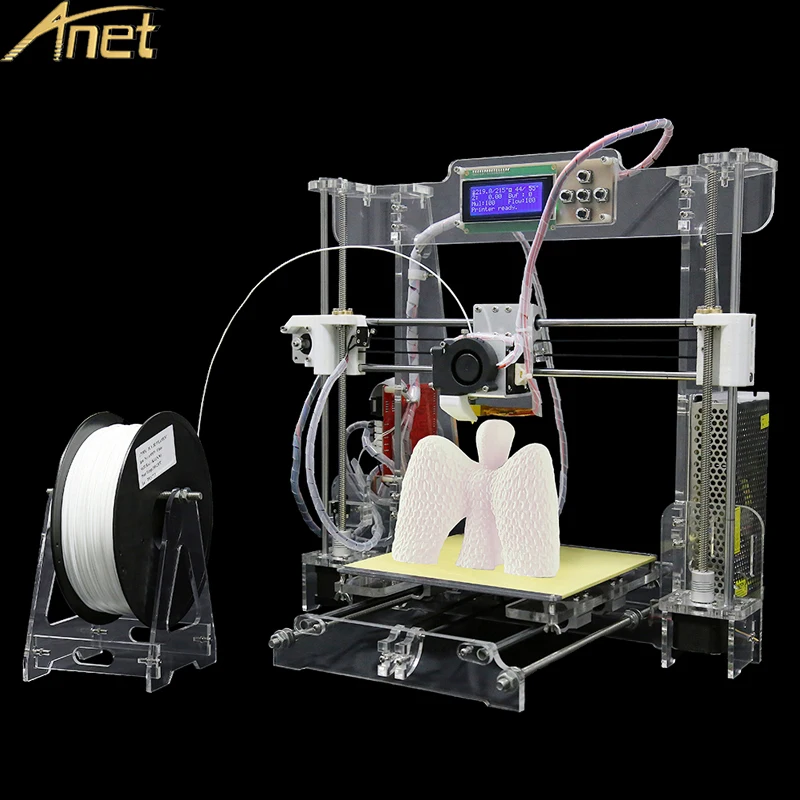 This quick 3D printer uses Uniz’s Uni-Directional Peel (UDP) technology to print far faster than its competitors, at up to 600mm/hour when in UDP mode.
This quick 3D printer uses Uniz’s Uni-Directional Peel (UDP) technology to print far faster than its competitors, at up to 600mm/hour when in UDP mode.
When not in UDP mode the maximum 3D printer speed is 200mm/hour, but this is still super fast. This is because not all parts are compatible, for example, any parts with cross sections, or fully enclosed parts cannot be printed in UDP mode; and no parts with solid infill can be printed either. You are also restricted as very tall prints cannot be printed in UDP mode, but if your part qualifies then you can print extremely quickly!
Not only is it an extremely fast 3D printer, but it’s also accurate. This SLA 3D printer has an XY resolution of 75 microns, and a minimum layer of thickness of just 10 microns. As a result, parts have very good surface finish and look almost like they have no layers at all. The printer can also calibrate itself, can be operated via your phone or table on the mobile app, and weighs just 12kg. It’s certainly one of the best speedy 3D printers for the price.
WASP 2040 PRO Turbo — Fastest 3D printer in the world
- Price: $3,400 — Available on Amazon here
- Max print volume: 200 x 200 x 400 mm
- Fastest 3D printer speed: 500mm/s recommend (some say it can print even faster!)
Delta 3D printers are known for their speed, and are the fastest FDM 3D printers in the world. The WASP 2040 PRO Turbo is a delta printer that is not only incredibly fast – at up to a recommend 500mm/s – but is also extremely accurate for an FDM printer. The resolution of up to 50 microns means very accurate and low cost prototypes and parts can be produced, and in record time. WASP claim they make the fastest 3D printers in the world for FDM.
WASP 3D printers are known for their reliability, with the Italian company ensuring the printers operate with workhorse-like consistency. It can print 3D printer filaments including ABS, PLA, PETG and Nylon, so if you want to print stronger parts from one of the tougher plastics you still can, and you can use third party filaments if you prefer – the WASP allows for these.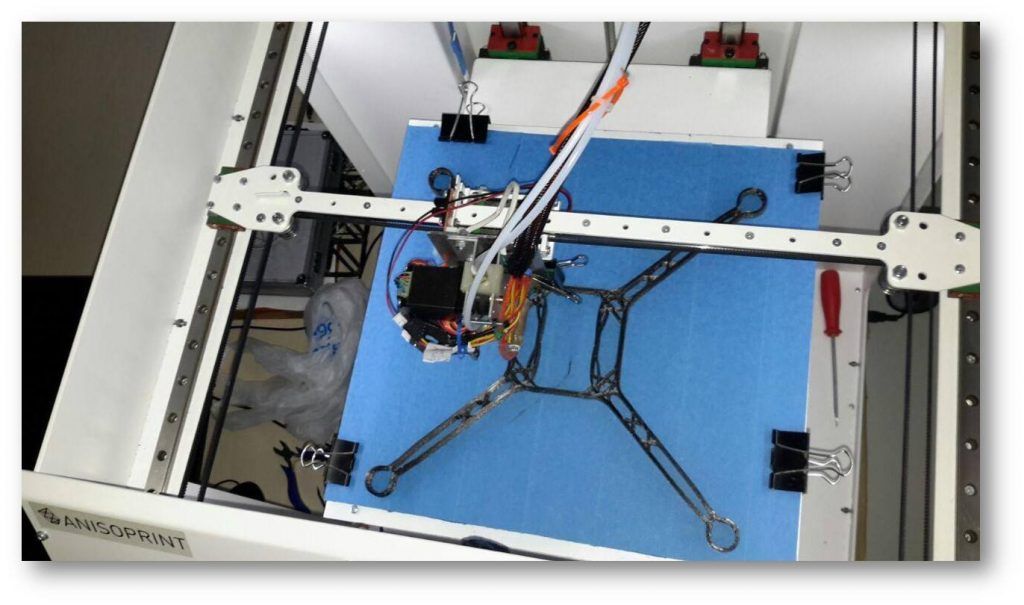 and you can choose to buy the WASP 2040 as either a single or dual extruder 3D printer.
and you can choose to buy the WASP 2040 as either a single or dual extruder 3D printer.
Unlike most RepRap 3D printer deltas, the WASP 2040 Turbo comes fully assembled, so those who aren’t masters of DIY do not need to worry. You can also choose to order it either as a single or dual extruder 3D printer based on your printing needs.
It’s the world’s fastest 3D printer for FDM, and also accurate and reliable – what more could you want for under $5,000!
- It also has a variation designed specifically as a clay 3D printer.
HP 3D Jet Fusion 5200 — Fastest Industrial 3D printer
- Price: Requires a quote
- Max print volume: 380 x 284 x 380 mm
- Fastest 3D printer speed: 4115cm3/hour
HP have only been actively involved in the 3D printing industry for the last few years, but have brought such technological advantages in that short space of time. The Jet Fusion 5200 epitomizes this, marking uncharted territory for 3D printing where it is now considered viable for mid-range production.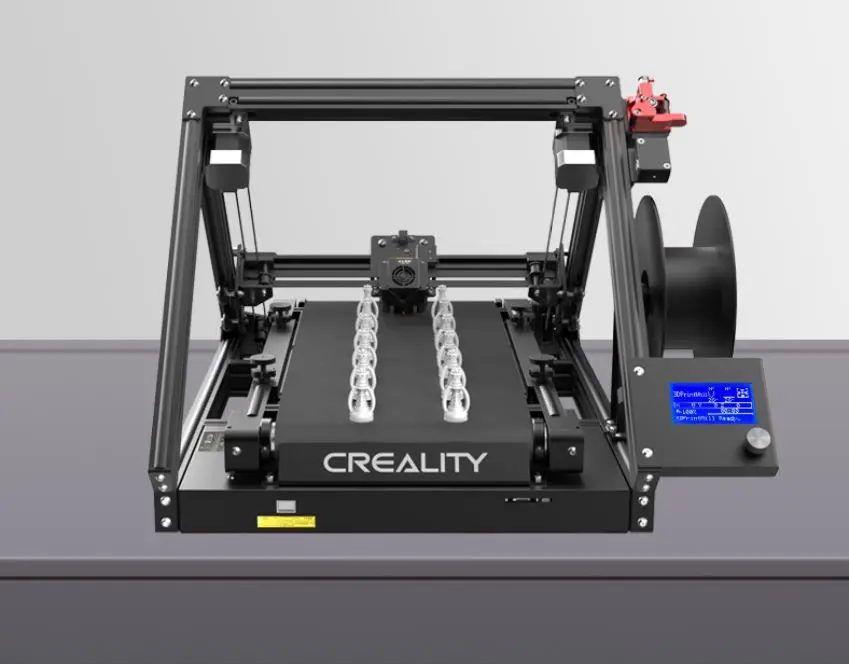
Multi Jet Fusion has always been known for its fast 3D printing speed, but the Jet Fusion is even faster than its predecessors. With speeds up to 4115cm3/hour, it’s faster than the Jet Fusion 4200 (4000cm3) and the 3200 (2800cm3) – and these were already some of the fastest 3D printers in the world. The high-quality 1200dpi print head resolution allows for extremely accurate parts with smooth surface finishes and crisp, sharp edges.
The Jet Fusion 5200 combines this astonishing speed with low part cost and scalability. Whole layers can be printed at once, rather than tracing each layer as with Selective Laser Sintering, meaning multiple parts can be printed at once without a drop off in productivity. Multi Jet Fusion isn’t known for its versatility of materials, but PA12, PA11 Nylons and TPU are strong materials with good properties for a variety of industries. It’s extremely fast, extraordinarily accurate, and a rare example of 3D printers being competitive in mid-volume part production – very exciting.
Do you really need a fast 3D printer?
Speed is always useful; nobody chooses to wait in a queue longer than they need to. However, with the quickest 3D printers, there are some cases where you can’t take advantage of this speed.
For FDM 3D printers, some materials become volatile and print with imperfections if you don’t slow right down, like PEEK, PC, and others. Printing at 150mm/s+ would just ruin your prints, so the speed is useless here.
Also, if you are printing a very simple object like a cube, speed becomes less useful as you can just use very large layer heights and print quickly anyway.
However, if your business depends on quick production, then absolutely go for a printer that can either print objects very quickly, or multiple objects simultaneously. The ability to rapidly prototype new designs and innovate quicker is invaluable, and other industries like 3D printed jewelry production or hearing aids need to be able to print custom designs at the highest speeds possible.
So, it depends. For hobbyists, speed is great for quality of life and printing all the cool things and useful 3D prints you can. For industry it can be more necessary, and businesses often opt for an industrial 3D printer than can meet their production speed requirements.
How Fast Can PLA Be 3D Printed?
The fastest FDM printers, such as the Flsun Super Racer, can print PLA up to 200 mm/h. However, the most common 3D printers, such as the Ender 3, can print PLA at around 50 to 80 mm/h without sacrificing print quality.
Related articles:
- Best large resin 3D printers (bigger = faster!)
- Best delta FDM 3D printers
- Best FDM 3D printers
7 Fastest 3D Printers - High Speed 3D Printing (Sept. 2022)
Looking for the fastest 3D printers? Or want to finish your 3D project fast?
No problem! I have a list ready for you. I understand that there are times when a 3D printer works better. This could depend on the type of project you work on or perhaps, just a personal preference.
This could depend on the type of project you work on or perhaps, just a personal preference.
No matter what your reason is, we are here to help. Keep reading to see the list of the fastest 3d printers on the market.
Contents
- 1 Fastest 3D Printers in the World
- 1.1 Fastest Desktop 3D Printer
- 1.1.1 #1 Uniz SLASH Plus UDP Printer Review
- 1.2 Fastest Consumer 3D Printer
- 1.2.1 #2 Delta WASP 2040 Turbo2 3D Printer Review
- 1.3 Fastest Industrial 3D Printer
- 1.3.1 #3 BAAM (Big AreaAdditive Manufacturing) Review
- 1.3.2 #4 HP Jet Fusion 5200 Review
- 1.3.3 #5 Massivit 1800 Review
- 1.3.4 #6 Zortrax Inkspire
- 1.3.5 #7. FLSUN QQ-S Delta 3D Printer
- 1.1 Fastest Desktop 3D Printer
- 2 What else do you need to know?
- 2.1 How to know if you have the right setting?
- 2.2 How to set the printing speed for the fastest 3D printers in the world
- 3 Conclusion
- 4 References
Using the fastest 3D printers can increase your production and help you save a lot of time.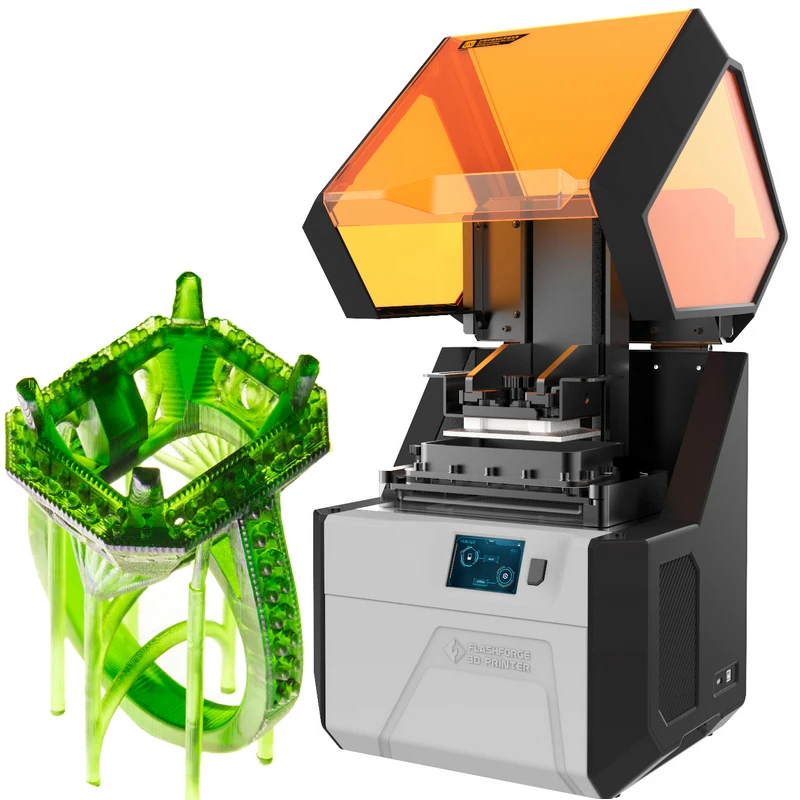 With 3D printing technologies, you can do as many iterations for prototyping.
With 3D printing technologies, you can do as many iterations for prototyping.
📌The speed of the 3D printer depends on different aspects including the material that is 3D printed, the size of the 3D printer, the size of the part you want to print and the complexity of its design. 3D printing technology may also matter.
With the advancement in technology, you can now 3D print bigger projects faster than ever. If this is the 3D printer you need, you’ll find one here. We’re dedicated to helping you find the world’s fastest 3d printer! Below you will find the fastest consumer, desktop and industrial 3D printers that can keep up with your fast-paced lifestyle or operation.
Fastest Desktop 3D PrinterIf you are looking for the fastest 3D printers, then you are on the right page. This is designed to fit in your workspace. This may be smaller compared to the other brands, but it is very competitive in terms of speed.
Check out our picks for the fastest 3D printers on the market today. These brands are highly recommended!
These brands are highly recommended!
Click Here to Check Price of Uniz Slash Plus
Uniz is popular for designing fast 3D printers. Slash Plus UDP is one of the fastest desktop 3D printers in the market today that uses liquid resin.
It is the first printer to employ Uniz’s Uni-Directional PeelTM (UDP) technology that delivers layerless, high-resolution end-user parts with exceptional surface finish and resolution. Yes, this is not among the industrial 3D printers on the market, but this is definitely one of the good commercial 3D printers out there.
UNIZ Slash Plus is a faster 3D printer compared to most of its competitors. In fact, this is over 10x faster than Form2 (Laser SLA) and Carbon3D M2 (CLIP DLP-SLA).
Form2 and Carbon3D M2 can finish a partial teeth project measuring 15.5mm for 2 hr 4 mins and 1 min, respectively. But UDP can complete the same task for only 12.5 sec. It’s over 10 times faster than the other two 3D printers. Considering the results, there is no question that this is one of the fastest desktop 3D printers in the market today.
It’s over 10 times faster than the other two 3D printers. Considering the results, there is no question that this is one of the fastest desktop 3D printers in the market today.
📌Uniz Splash UDP minimizes the peel time of the conventional layered stereolithography (SLA) process. “By reducing the up-and-down peel to one-directional peel action, UDP sets a new world record of 3D printing speed to over 700mm/hour z-axis speed, without the necessity of pure oxygen or exotic separation materials,” the creator noted.
This fast 3D printer is great for both prosumers and hobbyists. This is also perfect in the educational sector. Most importantly, it is very convenient to use because you can control it using a mobile app.
One great thing about this high speed 3D printing machine is its simple hardware design. It’s easy to clean and use. The device is also user-friendly, it is designed to help you adapt to UDP technology easily. For those looking for fast desktop resin 3D printers, UNIZ Slash Plus UDP is highly recommended.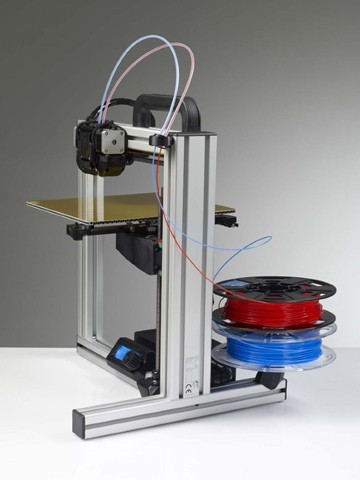
Features
- Durable Resin Vat. Its vat floor is composed of a specific polymer film designed to last for up to 1,000 3D printing hours.
- Mobile App Friendly. You can control this fast 3D printer using Android and iOS devices.
- Durable. This is built with a steel-reinforced carbon fiber frame. You can expect this to last for years.
- Built-In Model Repair Function
- Automatic Calibration
- Closed frame
Specifications
General
- Manufacturer: UNIZ
- Fastest 3D printer model: UniZ SLASH PLUS UDP
- Category: Desktop
- Technology: Resin (SLA, DLP…)
- Material: Liquid resin
- Max. build size: 192 × 122 × 200 mm
Performance
- XY accuracy: 0.03 mm
- Max. build size: 7.5 x 4.8 x 7.8 inches
- Max. build volume: 4.
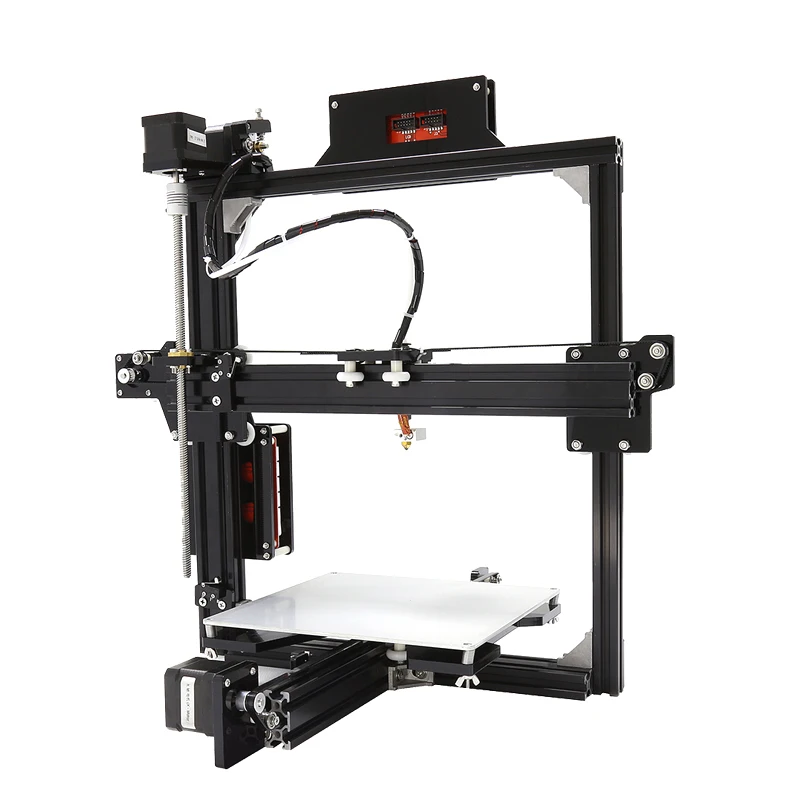 68 L
68 L - Min. layer thickness: 0.01 mm
- Layer resolution (XY): 75 μm
- Layer resolution (Z): 10 μm
- Solid Output Speed: 1,000 cc/hr
- Fastest 3D Print Speed: 720 mm/hr / 16,700cc/hr
Hardware
- Dimensions: 350 × 400 × 530 mm
- Weight: 12 kg
- Nozzle diameter(s) —
- Power input: 100-240 V 50-60 Hz AC
Connectivity
- USB
- Wi-Fi
- Ethernet
Pros
- High speed desktop 3D printer
- Doesn’t take so much space
- Easy to move around
- User-friendly
- Ideal for functional prototyping
- Professional results
- Over 10x faster than Form2 and Carbon3D M2
Cons
- Expensive
- Not for industrial use
Check Price
Go to top
Fastest Consumer 3D PrinterThis consumer 3D printer is a great printer for home use. It’s also a great tool if you want to start a 3D printing service.
Click Here to Check Price for DeltaWASP 2040 Turbo2
Delta WASP 2040 Turbo 2 can be the fastest home 3d printer for you with a dual extruder. Delta WASP’s size and built is perfect for home use. This 3D printer is 2 times faster than DELTA WASP 3MT and 1.5 times faster than DELTA WASP 60 100.
It can print objects as high as 40cm with resolution up to50 microns. Turbo 2 operates with a maximum print speed of 500 millimeters per second with a maximum travel speed of 1,000 millimeters per second. These numbers can easily dwarf the speed specs of most FFF/FDM 3D printers on the market which explains why we choose Delta WASP 2040 Turbo 2 as our fastest 3Dprinter for home.
Turbo 2 comes with two versions of extruders such as follows:
- Spitfire Red Extrude. Comes with a Spitfire LT Cartridge, which is a compatible LDM extruder that features paste extrusion.
- Zen Dual Extruder.
 Includes two 0.4 mm ZEN LT Cartridges enabling multi-material and or multi-color 3D printing.
Includes two 0.4 mm ZEN LT Cartridges enabling multi-material and or multi-color 3D printing.
Turbo 2 is versatile. This fast fused filament fabrication printer can produce different types of materials including ABS, Nylon and PETG. It is also compatible with filaments from third-party manufacturers, so you have a wider option when you need a filament.
For your comfort and convenience, this is one of the FDM 3D printers that support standalone printing through SD card. It also supports USB and Wi-Fi connectivity.
Specifications
General
- Fastest 3D printer model: Delta WASP 2040 Turbo2
- Manufacturer: WASP
- Price: $ 3,602
- Category: Desktop
- Technology: Extrusion (Fused Filament Fabrication FFF, FDM…)
- Filament diameter: 1.75 mm
- OS compatibility: Mac OS, Microsoft Windows, Linux
- Generic material: Yes
- Dual extruder
Performance
- XY accuracy: —
- Max.
 build size: 200 × 200 × 400 mm
build size: 200 × 200 × 400 mm - Max. build volume: 16.00 L
- Min. layer thickness: 0.05 mm
- Fastest 3D Print Speed: 500 mm/s
Hardware
- Dimensions: 490 × 440 × 870 mm
- Weight: 20 kg
- Nozzle diameter(s): 0.4 mm
- Power input: 220-240 V
Connectivity
- Wifi
- SD card
Main Features
- Heated Print Bed. Maximum temperature of 120 C° for 3D printing using ABS.
- Resurrection system. This allows users to save and resume their 3D printing projects. This is very useful in case of a power failure.
- Free ZED system. This is similar to the resurrection system, it allows the user to select from where they will continue the 3D printing process.
Other Features
- LCD screen
- Heated Print Bed
- Auto Calibration
- Dual extruder
- New proprietary board of industrial quality with Wi-Fi module
- New sliding system on bearings
- New mechanics of high-temperature-resistant arms
- Engine cooling system to increase performance
- Suspended cushioned Bowden
- End filament sensor
- External spool support
Pros
- Fast
- High printing temperature
- Versatile
- Reliable
- Powerful electronics
Cons
- Noisy
- Pricey
- Limited connectivity
Check Price
Go to top
Fastest Industrial 3D PrinterIf you are looking for a speedy industrial 3D printer the following machines are for you. These 3Dprinters are usually huge and pricey. But, they are good investments if you are planning to start a 3D printing service or business.
These 3Dprinters are usually huge and pricey. But, they are good investments if you are planning to start a 3D printing service or business.
Click Here to Check Price for BAAM
Cincinnati Incorporated, in partnership with Oak Ridge National Labs, has developed the world’s first industrial-size 3D printer. With this large build 3D printer, you can create 3D large-scale projects in just a matter of hours using additive manufacturing that is why this has been dubbed as the fastest industrial 3D printer.
BAAM uses the proven design and technology from its laser platform including the machine frame, motion system and control. It has also been adapted with an extruder and feeding system. This is designed for production and manufacturing. Its size and speed allow large parts to be finished quickly.
This large-scale 3D printer allows you to use commodity thermoplastic materials which makes printing cost per part more reasonable.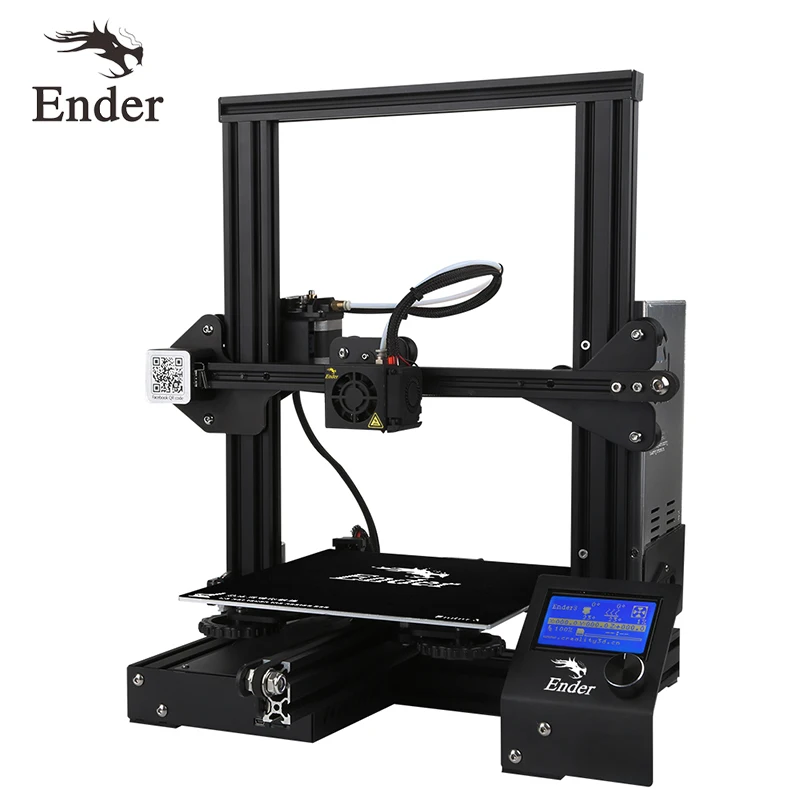 This is designed with an open architecture to give you more options in choosing the materials. At the same time, this keeps material costs low.
This is designed with an open architecture to give you more options in choosing the materials. At the same time, this keeps material costs low.
When it comes to print quality, you will surely be impressed because it has a great resolution and delivers high-quality outputs. In fact, this is the best large build 3D printer for your big 3D printing projects. The products are durable, high-quality and smooth-finish.
Specification
General
- Company: CI
- Fastest 3D Printer Model: BAAM
- Technology: BAAM (Big Area Additive Manufacturing)
- Process: FFF FDM
- Use: Industrial manufacturing
- Fastest 3D Printer Speed: 80 lbs of material deposited every hour
Materials
- Compatible with 3rd party filaments: Yes an open material system
- Printable material(s): ABS, PPS, PC, PLA, PEI, composite materials
Build Volume
- 3D print size: XL
- Print size millimeters (xyz): 6000 x 2300 x 1900 mm
- Print size inches (xyz): 236.
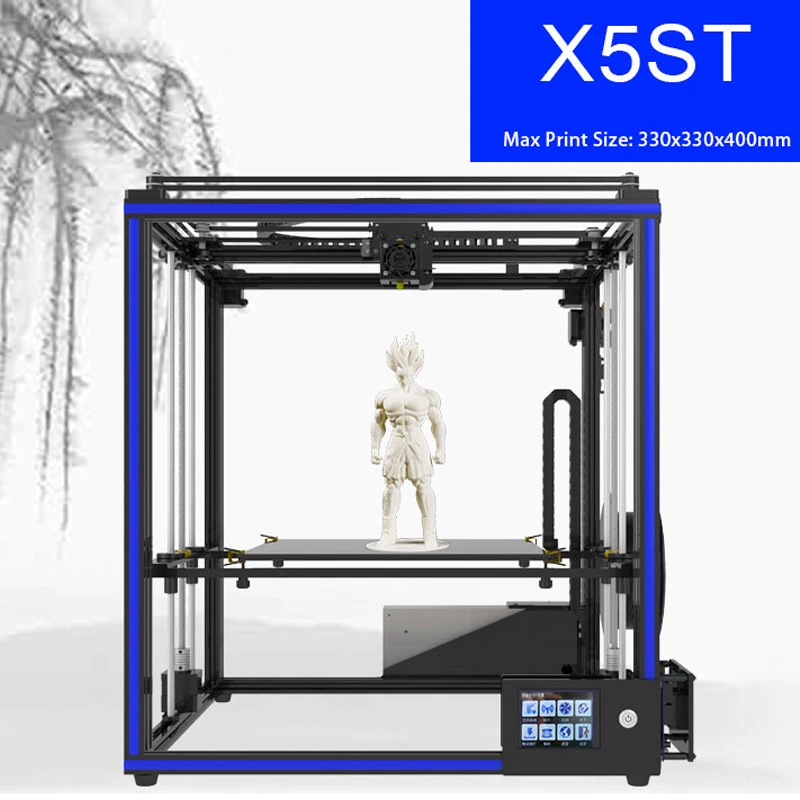 2 x 90.5 x 74.8 inches
2 x 90.5 x 74.8 inches
Properties
- Extruder type: Granular
- Print Speed: 80lbs/hr
- Frame: Stress relieved Steel plate fabricated frame
- Display: 22” LCD color touch screen
- Connectivity: Network interface/USB Outlet
FEATURES
- Steel Plated Frame
- 80 lbs/hour Feedrate
- Linear Motor Drives
- Touchscreen Control
- Commodity Materials
- 3D Print Size Available
- 140″ x 65″ x 72″
- 140″ x 65″ x 98″
- 240″ x 90″ x 72″
Pros
- Up to 80lbs of material deposited every hour
- Has varying nozzle sizes to achieve different beads widths/heights
- Large build volume 21 times larger than the next largest printer
Cons
- Expensive
- Takes a large space
Check Price
Go to top
#4 HP Jet Fusion 5200 ReviewClick Here to Check Price for HP Jet Fusion 5200
HP Jet Fusion 5200 3D printer is one of the fastest 3D printers out there. It is faster than the Jet Fusion 3D 4200. It is designed to deliver fast so you can propel your business into the future. HP 3D printers reinvent the way you prototype and produce functional parts by delivering quality over 10x faster at half the cost.
It is faster than the Jet Fusion 3D 4200. It is designed to deliver fast so you can propel your business into the future. HP 3D printers reinvent the way you prototype and produce functional parts by delivering quality over 10x faster at half the cost.
With this high-speed 3D printer, you can produce multiple prototypes at home within a day because this allows you to print plastic parts really fast compared to other technologies. You can print the part overnight and deliver it the day after to your customer. That’s how fast it delivers.
📌Gimatic, a global leader in automation and gripping solution, uses this 3D printer to develop new products more quickly, gain a speed-to-market advantage and close more deals. The company develops over 2 million components annually and prior to the HP 3D printers, they couldn’t serve their clients at a sustainable cost
With this technology, they are able to design new components and support their customers 100% to complete their own solutions. Also, it reduced their time to market and shorten up the lead time between component design and real parts production.
Also, it reduced their time to market and shorten up the lead time between component design and real parts production.
Specifications
General
- Fastest 3D printer model: HP Jet Fusion 5200
- Category: Industrial
- Technology: HP Multi Jet Fusion Technology
- OS Compatibility: Microsoft Windows
- Warranty: 1-Year Limited Warranty
Performance
- Max Build Volume: 380 x 284 x 380 mm/ 15 x 11.2 x 15 in
- Layer Thickness: 0.08 mm
- Building Speed: Up to 5058 cm³/hr (309 in³/hr)
- Print Resolution: 1200 dpi
Hardware
- Dimension: 2210 x 1268 x 1804 mm
- Weight: 880 kg
- Power input: 12 kW @ 380-415 V (line-to-line), 50 A max, 50/60 Hz 200-240 V (line-to-line), 80 A max, 50/60 Hz
Features
- Closed Frame. For safer operation, better print quality and less noise and heat loss.
- Touchscreen.
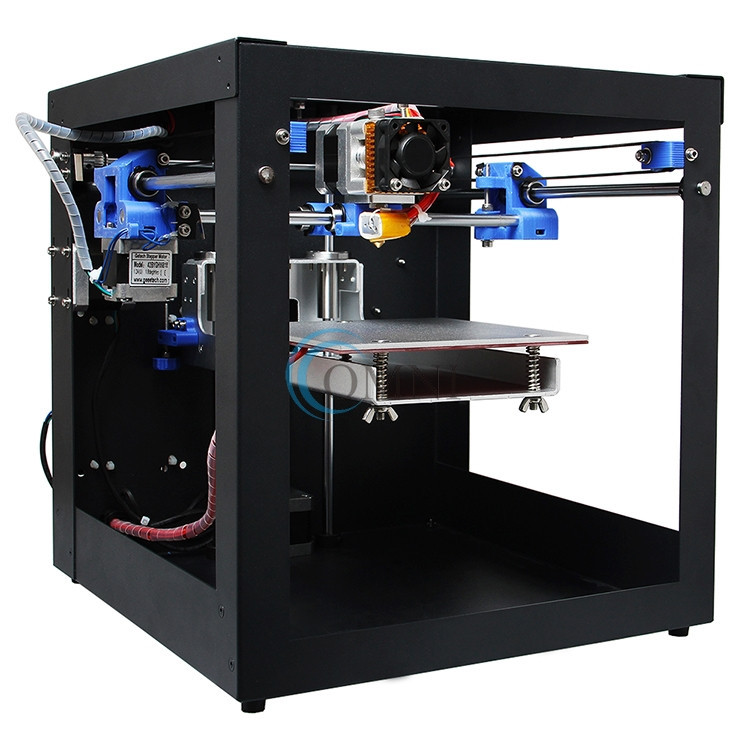 For easier operation, this 3D printer is equipped with a touchscreen operation. You can conveniently set the settings with a few touches.
For easier operation, this 3D printer is equipped with a touchscreen operation. You can conveniently set the settings with a few touches. - Multi Jet Fusion technologies. This 3D printer meets tolerances of +/-.012” or +/-.003” per inch, whichever is greater, for more precision.
- Durable Materials. Jet Fusion 5200 materials include nylon and glass-filled nylon that are popular for its great impact strength, medium flexibility and high resistance to environmental factors.
- Scalability. Multi Jet Fusion can make a single part or component as easily as dozens or hundreds of production pieces.
- Complex Geometry. You can build geometries easily due to the 3D printing process. Thus, you can add complexity without any additional cost.
- Rapid Turnaround Time. You can ship parts typically in 3-4 days for faster design iterations and speed to market.
- Part Production. This fast 3D printer can produce end-use parts with near-isotopic properties on-demand, increasing throughput.
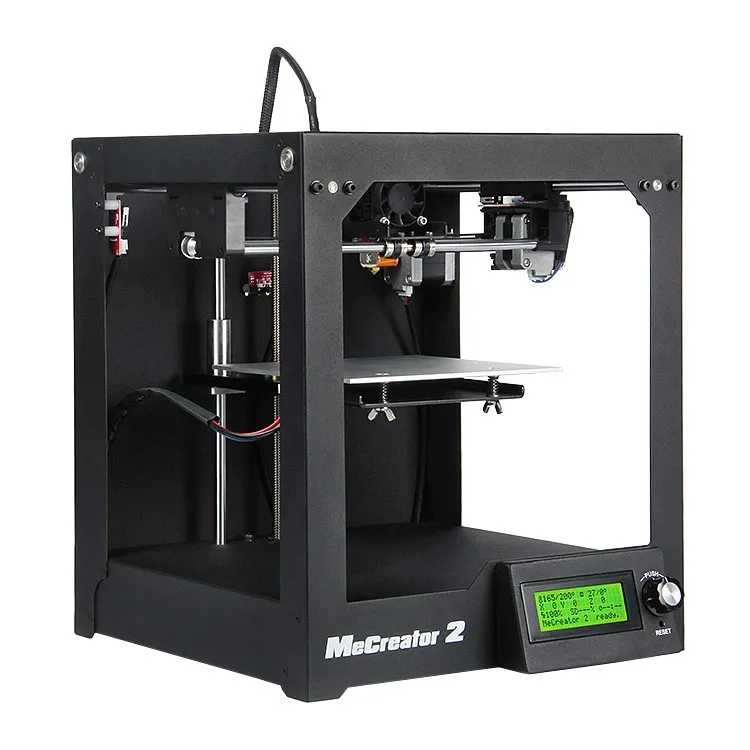
-
Enhanced manufacturing predictability – Produce functional parts with reduced errors, failed jobs, and unplanned downtime. Overall, it’s uniquely predictable and consistent for any type of part and doesn’t need support structure.
-
Expands new applications. Address more final part applications with new levels of repeatable accuracy and accommodates more materials for various applications
Pros
- Smooth operation
- Decreases lead time
- High print quality
- Complements CNC machining
- Extremely fast and cost-efficient
- Very high accuracy and resolution
- Prototypes for form, fit and function testing
- Parts exceptionally strong and virtually isotropic
- Delivers quality output up to 10x faster at half the cost
- Ideal for low-volume production of complex end-use parts
- Prototypes with mechanical properties to rival injection-molded parts
- Series of small components as a cost-effective alternative to injection molding
Check Price
Go to top
#5 Massivit 1800 ReviewClick Here to Check Price for Massivit 1800
Massivit 3D is the only provider of large format 3D printing solutions for the visual communication arena. It also offers uniquely rapid additive manufacturing technology combined with proprietary printing materials, user-friendly software and a suite of personalized services dedicated to customer success.
It also offers uniquely rapid additive manufacturing technology combined with proprietary printing materials, user-friendly software and a suite of personalized services dedicated to customer success.
Massivit uses patented Gel Dispensing Printing (GDP) technology that empowers print services, exhibition and entertainment producers and interior designers to secure new revenue sources by providing innovative 3D campaigns with remarkable speed.
📌It’s 1800 Flagship 3D Printer is designed to cater to innovative advertising, retailing, entertainment, interior design applications and enable rapid turnaround for campaigns and projects. Its specification aims to address a specific business need.
Massivit 1800 is the first of its kind to produce super-size signages, displays and props for visual communication. With its unprecedented printing speed, you can expect business growth through the scalability of printing heads and versatile printing materials that’s why this is one of the fastest 3D printers on our list.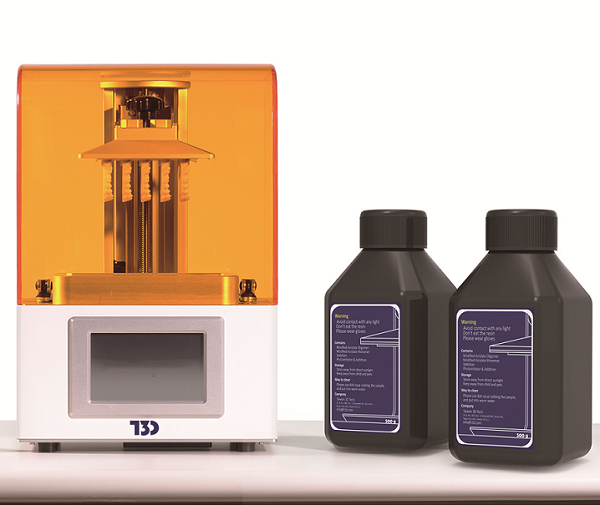
Overall, Massivit 1800 is a fast, reliable and profitable 3D printer.
Specifications
- Fastest 3D printer model: Massivit 1800
- Print Volume: 1.5 x 1.17 x 1.8 m
- Max printing size: 145 x 111 x 180 cm
- Max. object weight per piece: 330 lbs
- Productivity: Up to 35cm/hr
- Printer Dimension: 122.4 x 87.6 x 110.4
- Fastest 3D Print Speed: Up to 13.7in/hr
- X-Y Horizontal Speed: 1,000 mm/s
- Printer Weight: 5511 lbs (2500 kg)
- Ambient Temperature: 60.8° F – 86° F (16° C – 30° C)
- Ventilation: Required
- Printing material: Dimengel – Massivit proprietary photo polymeric printing material white shade pails of 19kg
- Software on machine: Massivit proprietary front end software
- Operating on Windows
- Network: LAN connection
- Massivit Smart: Massivit proprietary software* for file preparation
- Features: scale, rotate, slice, support generation
- Input file format: STL
Operation Requirements
- Electrical voltage: 3x32A 380-400VAC±10%, 50/60Hz
- Power consumption @50Hz (printing): 10kW
- Air pressure 6-8 bar | 88-118 psi
- Ventilation
Pros
- Super-size printing capacity (for visual marketing)
- Geometric freedom for curves and customization
- Over 100 applications (integrated 2D and 3D signage and displays, soft signage, PoS displays, selfie points, scenic props, channel lettering, molds for thermoforming)
- Easy to operate
- More printing power for your money
- Helps you maximize your productivity
Cons
- Very expensive
- Needs large space for storage
Check Price
Go to top
#6 Zortrax InkspireClick Here to Check Price for Zortrax Inkspire
Zortrax Inkspire is a simple, smart and practical 3D printing machine that delivers high-quality 3D printed parts and objects. It performs professionally and works fast.
It performs professionally and works fast.
I have a great experience using this 3D printer because it is fast and versatile. It is made for speed and surgical precision, so you can bank on it when it comes to high speed and accuracy.
Furthermore, it has a sensitive touch screen with full color that is very convenient to operate. It’s also multi-language and the interface is very user-friendly. Even beginners won’t have a hard time making it work.
Zortrax is one of the fast resin 3D printers in the market. It relies on a high-resolution LCD screen with UV LED backlighting to cure photopolymers layer by layer. It has industrial build quality, consistent speed, easy support removal and wide resins compatibility. It supports all available resins that can be cured by light with 405 nm wavelength and a pixel size of 50 microns.
When it comes to the build quality, it has a built-in carbon filter. It calibrates the platform automatically and offers serial production capability.
📌Overall, I’m very impressed with its build quality, performance, and speed. Its fair price also makes it all the more attractive. For those looking for fast resin 3D printers, I highly recommend this one.
Specification
General
• Fastest 3D Printer Model: Zortrax
• Technology: Resin SLA/ UV LCD
• Fastest 3D Printer Speed: 20-36 mm/h
• Pixel Size: 50 microns
• Layer resolution: 50×50 microns
Build Volume
• 3D print size: Desktop
• Print size millimeters (xyz): 74 x 132 x 175
• Print size inches (xyz): 2.9 x 5.2 x 6.9 in
Properties
• Print Speed: 20-36 mm/h
• Frame: Full rigid solid metal
• Display: Intuitive touch interface
• Connectivity: USB, Wi-Fi and ethernet
FEATURES
• Full rigid solid metal frame
• Touchscreen Control
Pros
- Fast and versatile
- Sturdy build/frame
- Quality components
- User-friendly interface
- Fast and responsive interface
- Delivers high-quality results
- Semi-automatic calibration
- Eight times faster than SLA
- Six times more precise than SLA
Cons
- Menu layout can still be improved
Check Price Here
Go to top
#7. FLSUN QQ-S Delta 3D Printer
FLSUN QQ-S Delta 3D PrinterClick Here to Check Price for FLSUN QQ-S
FLSUN QQ-S is a pre-assembled 3D printer. It is so easy to set up, even newbies can make it work. The package includes instructions in the videos. It is saved on the enclosed SD card. The clip is also available on YouTube.
Leveling FLSUN QQ-Sis also very easy. Making your first 3D print is also effortless. Just make sure to pre-heat and clean the nozzle. The test print uses optimized code and produces a faultless first print. Also, the company is eager to make the whole experience smooth for users like you because there are a lot of spare parts and screws to keep you going when there is an emergency.
FLSUN QQ-S is also packed with powerful features including WiFi remote controller, lattice glass platform, and a double fan cooling system.
📌But what makes FLSUN QQ-S Delta 3D printer is qualified in the list is ultra-fast printing speed which is a lot faster than the average printer. It has an all-metal fuselage that keeps the printer in higher strength. FLSUN QQ-S Delta’s stable structure is another factor that contributes to its high speed.
It has an all-metal fuselage that keeps the printer in higher strength. FLSUN QQ-S Delta’s stable structure is another factor that contributes to its high speed.
Specification
General
• Fastest 3D Printer Model: FLSUN QQ-S
• Technology: FDM (Fused Deposition Modeling)
• Process: FFF FDM
• Fastest 3D Printer Speed: 300 mm/s
Materials
• Compatible with 3rd party filaments: Yes an open material system
• Printable material(s): PLA, ABS, Aluminum
Build Volume
• 3D print size: Desktop
• Print size millimeters (xyz): 255 x 255 x 360 mm
Properties
• Extruder type: Titan
• Print Speed: 300mm/s
• Frame: Full rigid solid metal
• Display: Sensitive touchscreen
• Connectivity: SD card
FEATURES
- 3.2-inch touchscreen
- Wi-Fi remote controller
- Lattice glass platform
- Double fan cooling system
- SD card with instruction files
Pros
- Easy leveling
- Stable structure
- Noise below 50 dB
- Excellent for the price
- Has powerful features
- Ultrahigh printing speed
- Double fan cooling system
- Supports flexible filaments
- SD card with instruction files
- Automatic resume from power outage
- Faster than the average 3D printer
Cons
- Connecting to a WiFi needs a special ap
- The noise across the glass is painful to hear
- End stop cables are extra slack and have to be secured
Check Price Here
Go to top
The fastest 3D printers can reduce lead time and increase productivity which makes it very appealing to 3D printing services.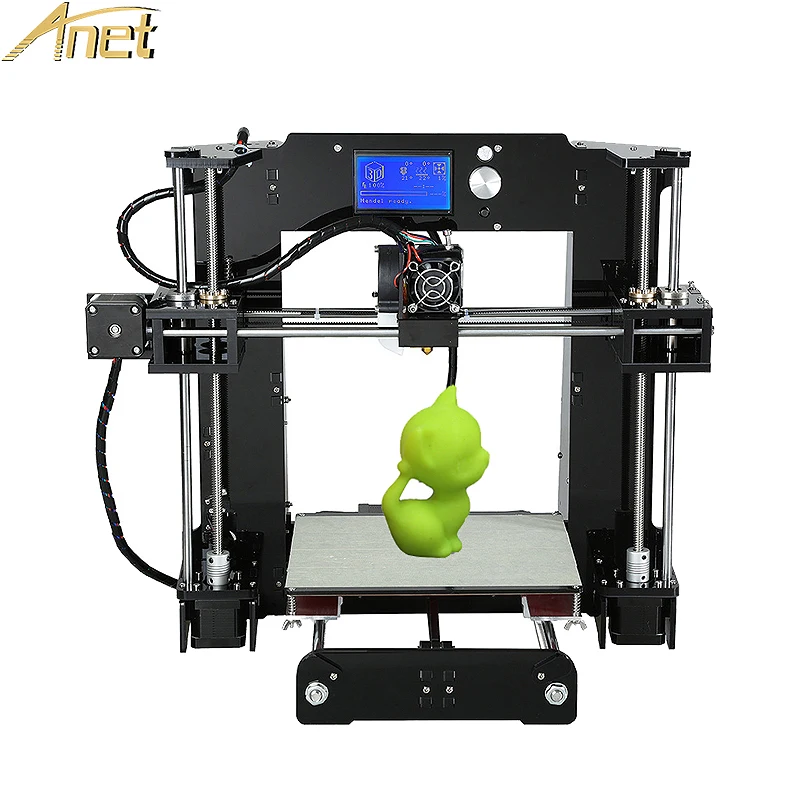 The downside with this is that these printers tend to be very expensive. You can’t find the fastest 3d printer under 1000 or the fastest 3d printer under 500. All of them will cost you $,3000 and more.
The downside with this is that these printers tend to be very expensive. You can’t find the fastest 3d printer under 1000 or the fastest 3d printer under 500. All of them will cost you $,3000 and more.
What else do you need to know?
If you are new to exploring the fastest 3D printers in the world, then this section will definitely be helpful to you.
First, let’s define some terminologies related to this topic.
Print speed. As the name suggests, it is the main speed setting that will influence the 3D prints. It determines how fast the motors of the printer move including the motors controlling the X and Y axis and the extruder motors.
Travel speed. This refers to how fast the printer’s print head moves when it’s not extruding plastic. Increasing travel speed can save significant amounts of print time. However, when increased too much it may lead to ringing or ghosting outputs. It can even misalign layers resulting in a failed print.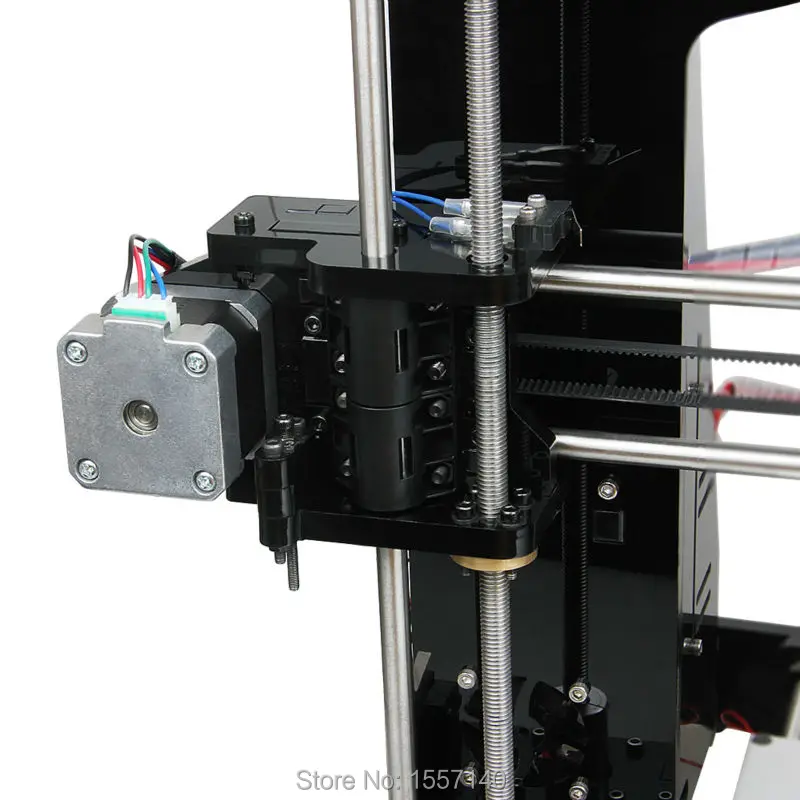
Retraction speed. This refers to how fast the printer pulls filament back before travel moves. This setting is critical for reducing stringing and improving the quality of your prints. When it is too slow or too fast, you may be left with unsightly strings and blobs.
How to know if you have the right setting?
To test for print speed, download the test model here. You will find instructions on how to create the settings for this print. It should print the same shape while gradually increasing the speed.
When the print speed is too slow, it may cause print deformation due to the nozzle sitting on the plastic for too long. Meanwhile, too fast speed and there may be other overheating artifacts caused by insufficient cooling, ringing, under extrusion, and weak layer adhesion.
To get the best output, you have to achieve the perfect setting considering the speed of the 3D printer without sacrificing the print quality.
To refine the speed of 3D printers, you split it into many more secondary settings such as follows:
Outer wall/shell speed: The setting adjusts how fast the outermost perimeter of the model is printed.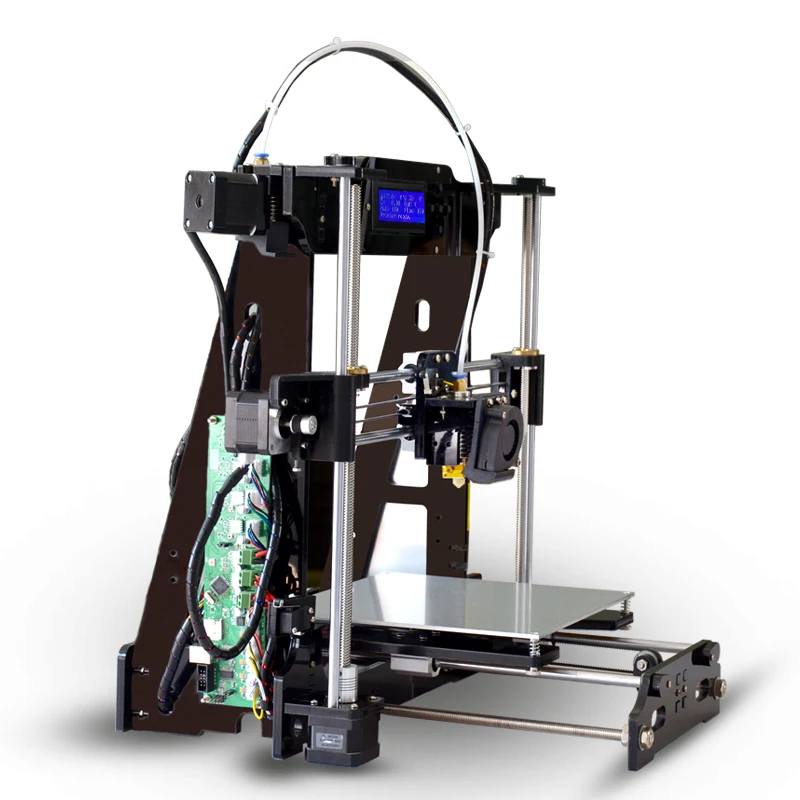 It is typically decreased slightly to improve surface quality.
It is typically decreased slightly to improve surface quality.
Inner wall/shell speed: The setting refers to the speed the inner perimeters of the model are printed. It is typically the same as the overall print speed to decrease print times while maintaining print strength.
Infill speed: The setting adjusts how fast the infill of the model is printed. It is typically the same as the overall print speed to decrease print times while maintaining print strength.
Top/bottoms peed: The setting adjusts how fast the tops and bottoms of the model are printed. It’s typically decreased slightly to improve surface quality.
How to set the printing speed for the fastest 3D printers in the world
The speed is usually set in the slicing software that you use to prepare the 3D model. If you are using Cura 15.04, you can simply input the printing speed in the Print speed field on the Basic tab.
For those using the older versions, you have to switch to Advanced mode first and open the Speed tab before you can access the Print Speed setting. Thus, setting the speed largely depends on what software you use.
Thus, setting the speed largely depends on what software you use.
Conclusion
The machines above are the fastest 3D printers in the world. Yes, they are the best 3D printers when it comes to speed. As you can see, you will find a speedy 3D printer for home, commercial or industrial use. Whatever your purpose is there’s definitely a fast 3D printer for you.
📌The brands mentioned above have a good reputation and are proven to deliver fast results, but they are quite costly. Despite that, I can assure you that they are worth it because 3D printing technologies are a good investment.
If you want to learn more about 3D printing, check out our homepage.
ReferencesHigh speed wide format FDM 3D printer.
Greetings 3d printing enthusiasts and professionals. Anyone interested in cutting edge technology.
My name is Alexander Kozlovsky. I would like to share the results of my development. This is the kinematics of movement. Which can be applied in 3D printing, high-precision machine tools and other equipment.
This is the kinematics of movement. Which can be applied in 3D printing, high-precision machine tools and other equipment.
In the article I will talk about the possibilities that this technology opens up in 3d printing. Since this topic is close to 3dtoday.ru readers. And many are interested.
I want to warn you right away, I will not reveal the essence of kinematics in the article. To be able to complete the development before it is copied. It is possible that this kinematics can replace the existing ones.)
And so we went. Buckle up.)
Based on this kinematics it is possible to create printers with high speed and large print area. The performance of the kinematics was confirmed by the production of a prototype.
But before proceeding to the description of the possibilities of this kinematics. And proof of its performance. I would like to touch upon the topic of why large-format printing is needed. What difficulties arise when creating such printers.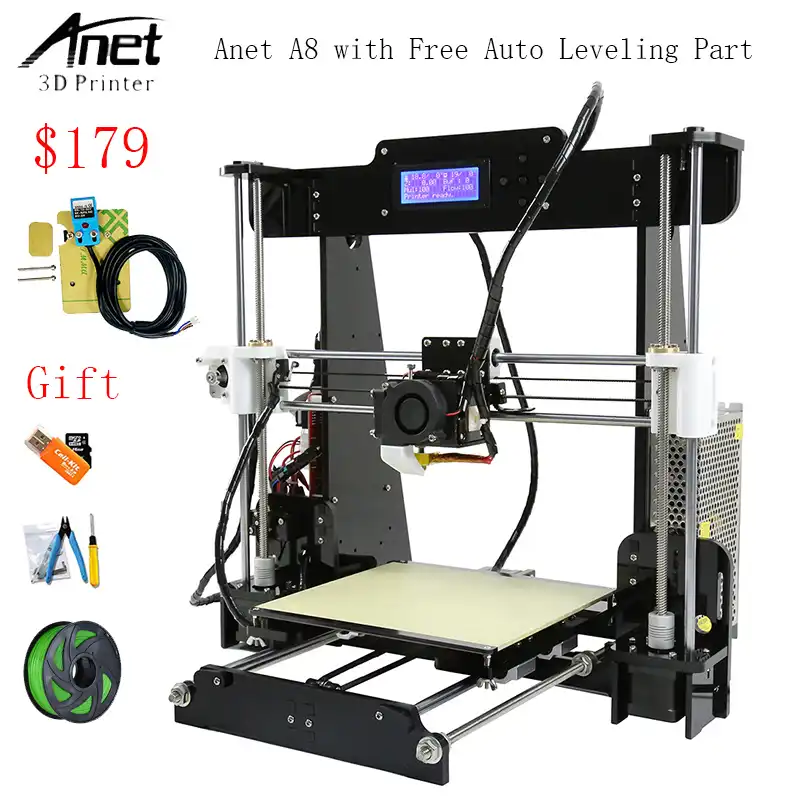 This is important for understanding what qualities a printer should have.
This is important for understanding what qualities a printer should have.
Today, the most common 3d printing technology is FDM printing. A large number of printers have already been developed and are being produced. Based on different kinematics. Also, a wide variety of materials are produced for this technology.
In order not to deviate from the main topic, I will refer to the dagov article about the types of kinematics published on this resource. The article describes in detail the types of kinematics. Thanks dag.
Different types of kinematics have their pros and cons. And depending on the tasks performed and the cost of the printer. Users select the appropriate option for themselves.
The main characteristics by which the printer is evaluated are cost, quality, speed and size of the print area. Unfortunately, there is no universal printer that combines all these qualities on the market yet.
The existing mechanics of the printer does not allow to significantly increase the speed and print area, for objective reasons.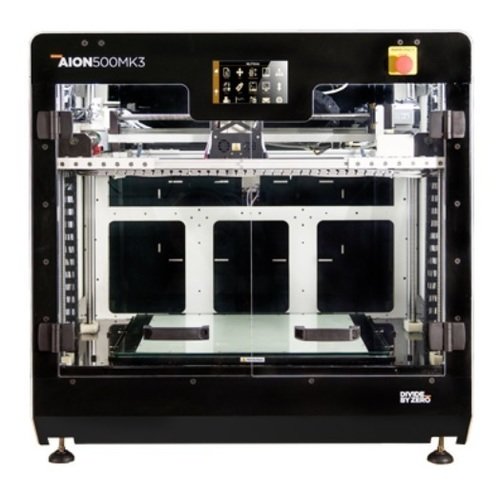 The laws of physics apply.) As speed and print size increase, inertia increases when positioning the extruder. Which leads to the need to increase the rigidity of the printer frame, increase the power of the engines. This in turn leads to the need to use high-quality guides, and other related components. Which in turn leads to an increase in the cost of the printer.
The laws of physics apply.) As speed and print size increase, inertia increases when positioning the extruder. Which leads to the need to increase the rigidity of the printer frame, increase the power of the engines. This in turn leads to the need to use high-quality guides, and other related components. Which in turn leads to an increase in the cost of the printer.
Large print area printers cost exponentially. At the same time, even with expensive printers on the market. Relatively slow print speed. It turns out a vicious circle.
I want to note that for printers with a large print area, speed is a key indicator. Since large volumes are printed. Printing time can reach several days, and even weeks.
The speed and print size of modern printers can be judged by what is on the market.
For example, one of the main players in FDM 3d printing is BigRep.
Print speed example. youtube.com
Cost. 3dtool.ru
You can draw your own conclusions about the speed of printing and the cost of printers.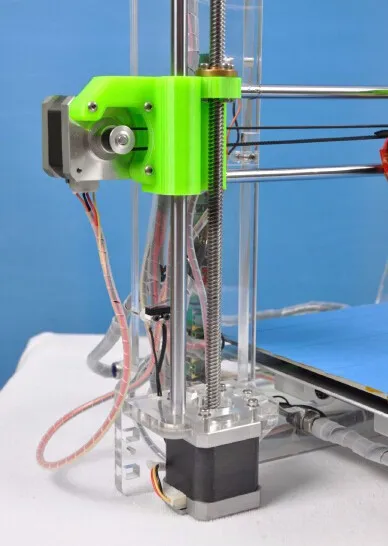
And since there is no worthy offer on the market, not many people can afford large-format 3d printing. This, in turn, hinders the development of related areas.
Large format FDM 3d printer tasks.
I would single out several areas.
Create large and complex shapes. Hulls of cars, boats, planes, helicopters, drones. Printing for the needs of medicine, prostheses, exoskeletons. Tuning and body kits for cars. Printing molds for casting and composites. Creation of art forms, statues, decorative elements, furniture. And much more.
The possibilities of large-format 3D printing open up great prospects for industrial and domestic applications. And it can accelerate the development of entire industries.
It seems to me that the need for such a tool is very great.
But is it possible to significantly improve the characteristics of modern printers. Reduce cost, increase speed and print sizes. And what are the advantages of the proposed kinematics.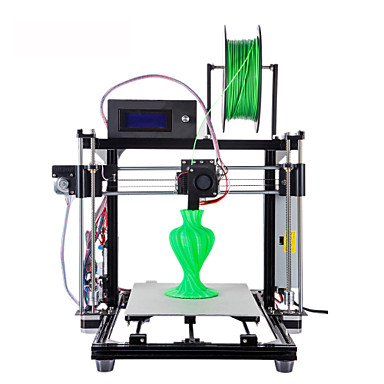
Let's move on to the characteristics.
First prototype.
Print sizes up to X400xY700xZ300 mm.
The print speed on this prototype can be increased to 250 mm or more. The potential for overclocking and quality is much higher than that of delta and delta robots. The fastest types of kinematics presented at the moment. But they have two significant drawbacks. Difficult setup (geometric distortion) and relatively small print area. The proposed kinematics does not have these shortcomings.
Sample photo from video. Size 60x60 mm.
Second prototype.
Speed test. Dimensions of the print area X550xY900xZ600 mm.
Travel speed over 1000 mm/sec. According to the program 1400 mm/sec.
Planned.
This kinematics allows you to build 3d printers up to 2m per XY axis and more. while maintaining speed. We hope to achieve print speeds of up to 500-1000 mm/sec, even with complex infill strategies. The task is not simple, as many factors affect printing. Which includes the properties of plastic. On the second prototype, an idle speed of more than 1400 mm / s has already been achieved. And this is not the limit.
Also, this kinematics involves the creation of industrial printers with high-temperature chambers for printing with industrial plastics. A high-temperature extruder for these tasks has been developed and is being finalized.
I would like to note one of the important factors. That the overall dimensions of the printer will be slightly larger than the printable area. The printer will be relatively compact. The cost of the printer will be significantly lower than existing analogues. And in terms of characteristics, they are significantly superior.
A prototype printer with a print area of 1x2m (or so) is planned to be built soon. With improved kinematics. The speed of movement will be even higher.
External view of the printer.
Ask questions in the comments. Within the limits of non-disclosure of the essence of kinematics, I will try to answer.
For cooperation email: [email protected]
Industrial 3D printers Total Z
FDM and SLS 3D printers, drying and post-processing equipment
About company
FDM 3D printers
Industrial 3D printers Total Z PRO series
450-PRO 950-PRO
Total Z High Performance LPRO Series 3D Printers
1000-PRO-LL
Total Z G3 Series Desktop 3D Printers
250-G3 250-G3 (2X) XL250-G3(2X)
Total Z G5 Series Desktop 3D Printers
G5
SLS 3D printers Total Z
SLS-250
Portal systems for 3D printing with granules
Total Z AnyForm FGF
Total Z machines for drying and post-processing
Total Z D5Vacuum drying chambers
Help prepare plastic for printing. Remove moisture from hygroscopic materials. Reduce the risk of plastic "boiling", extruder breakage, deterioration of the surface quality of the product.
Remove moisture from hygroscopic materials. Reduce the risk of plastic "boiling", extruder breakage, deterioration of the surface quality of the product.
Watch →
Total Z MPC-310Acetone baths
Equipment for chemical post-processing of finished objects. Helps to achieve a glossy and smooth product surface.
Watch →
Total Z UB-450; 500; 650; 950; 1200;Ultrasonic baths
Machines for physical and chemical post-processing of models. Remove the supporting plastic from the surface of finished products. They clean the material in places inaccessible for manual processing.
See 5 models →
Our capabilities
The equipment complies with Russian and international standards
Consumables for printers and equipment are always in stock
We participate in R&D, cooperate with research institutes
We work with defense enterprises and government customers
Operational warranty service
Departure and training on the territory of the customer
Implemented projects by industry
Aviation industry and special products
Supply of an industrial 3D printer for the project of the MS-21 passenger aircraft of Irkut Corporation.
Supply of high-temperature 3D equipment for the laboratory of additive technologies of VIAM.
Supply of a 3D printer for printing with experimental materials for the production of the Central Institute of Aviation Motors.
Shipbuilding
Selection of samples of engineering plastic for the project of printing body elements for a shipyard.
Auto industry
Supply of equipment for 3D prototyping to the plant of the AvtoVAZ group.
Rocket and space
Supply of the first production equipment for 3D printing to the Center for Additive Technologies of JSC RCC Progress.
Foundry
Fabrication of a matrix using FDM 3D printing for the production of piece metal parts that have been discontinued or to replace parts with a long delivery time.
Education
Production of a desktop 3D printer for schoolchildren and students in collaboration with a team of developers of teaching materials for classrooms.
Electronics
Implementation of 3D equipment at the Simvol East Kazakhstan region.
Prototyping of lighting equipment for the Pyaterochka grocery store chain.
Agroprom
Complex equipping of the research agro-engineering center with equipment.
Aviation industry and special products
Supply of an industrial 3D printer for the project of the MS-21 passenger aircraft of Irkut Corporation.
Supply of high-temperature 3D equipment for the laboratory of additive technologies of VIAM.
Supply of a 3D printer for printing with experimental materials for the production of the Central Institute of Aviation Motors.
Shipbuilding
Selection of samples of engineering plastic for the project of printing body elements for a shipyard.
Auto industry
Supply of equipment for 3D prototyping to the plant of the AvtoVAZ group.
Rocket and space
Supply of the first production equipment for 3D printing to the Center for Additive Technologies of JSC RCC Progress.
Foundry
Fabrication of a matrix using FDM 3D printing for the production of piece metal parts that have been discontinued or to replace parts with a long delivery time.
Education
Production of desktop 3D printers for schoolchildren and students in collaboration with a team of developers of teaching materials for classrooms.
Electronics
Implementation of 3D equipment at the Simvol East Kazakhstan region.
Prototyping of lighting equipment for the Pyaterochka grocery store chain.
Agroprom
Complex equipping of the research agro-engineering center with equipment.
Services
3D printing
Casting
Reverse engineering
prototyping
Upcoming Events
New models of Total Z industrial 3D printing systems in Moscow at the Interplastica exhibition
Interplastica is a key event for the plastics and rubber market, which annually brings together experts from all over the world at one business platform.





